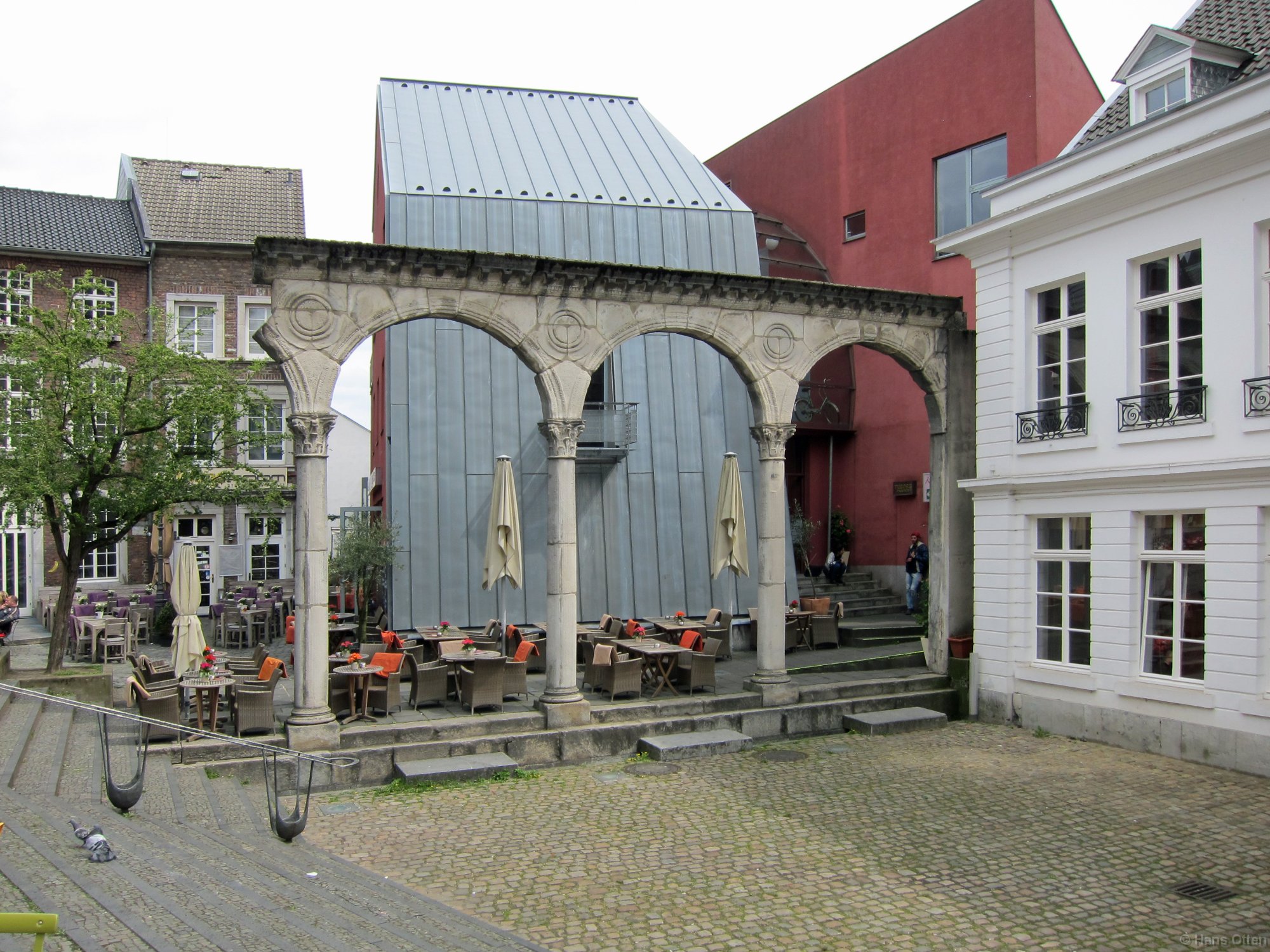Aachen Aquae Granni
Flint quarries on the Lousberg, Schneeberg, and Königshügel, first used during Neolithic times (3,000–2,500 b.c.), attest to the long occupation of the site of Aachen, as do recent finds under the modern city’s Elisengarten pointing to a former settlement from the same period. Bronze Age (ca. 1600 b.c.) settlement is evidenced by the remains of barrows (burial mounds) found, for example, on the Klausberg. During the Iron Age, the area was settled by Celtic peoples who were perhaps drawn by the marshy Aachen basin’s hot sulphur springs where they worshipped Grannus, god of light and healing.
Later, the 25-hectare Roman spa resort town of Aquae Granni was, according to legend, founded by Grenus, under Hadrian, in ca. a.d. 124. Instead, the fictitious founder refers to the Celtic god, and it seems it was the Roman 6th Legion at the start of the 1st century that first channelled the hot springs into a spa at Büchel, adding at the end of the same century the Münstertherme spa, two water pipelines, and a likely sanctuary dedicated to Grannus. A kind of forum, surrounded by colonnades, connected the two spa complexes. There was also an extensive residential area, part of it inhabited by a flourishing Jewish community. The Romans built bathhouses near Burtscheid. A temple precinct called Vernenum was built near the modern Kornelimünster/Walheim. Today, remains have been found of three bathhouses, including two fountains in the Elisenbrunnen and the Burtscheid bathhouse.
